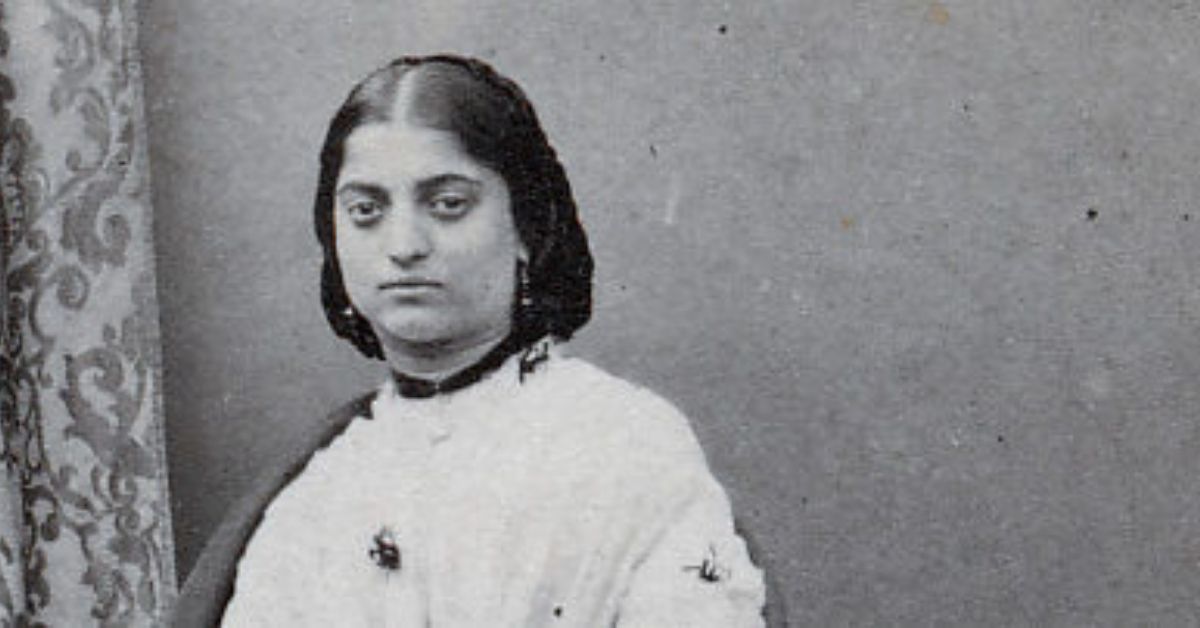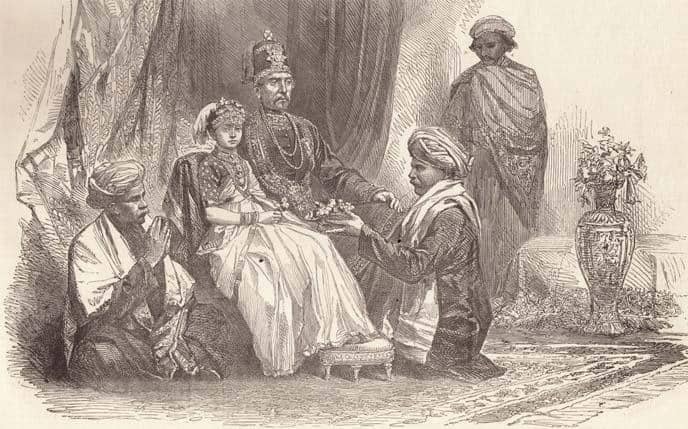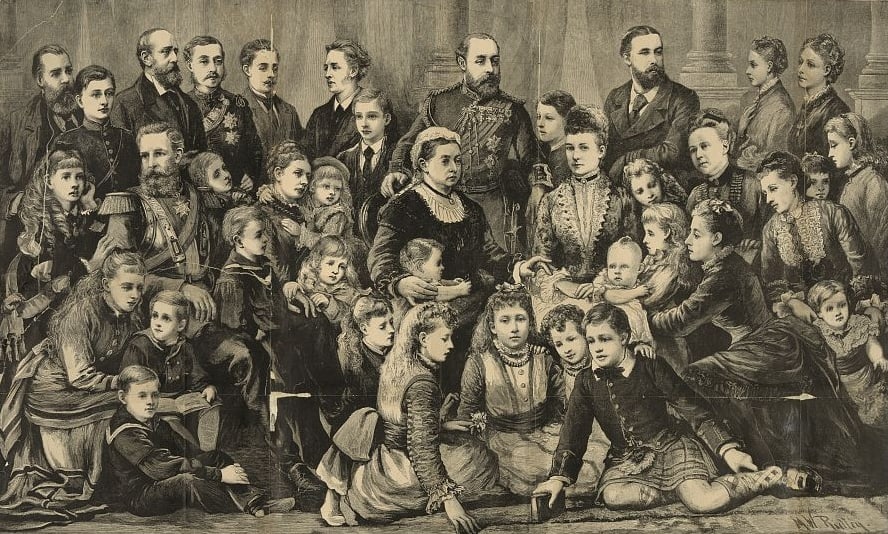The Duke and Duchess of Sussex’s interview with Oprah put a spotlight on Britain’s colonial history. As Meghan Markle expressed the palace’s concerns around her then-unborn son Archie’s skin colour, several took a stand to express their shock at the racism she experienced at the hands of the British media, and how the royals “failed to empathise” with these aspects.
In this context, it becomes important to recognise a long forgotten ‘princess of colour’ whose struggles have slowly and steadily been erased from the pages of history. Yet, her existence plays an equally important role in highlighting Buckingham Palace’s treatment of non-white persons. In a piece written for The Quint, historian of Victorian royalty Dr Priya Atwal said that parallels can be drawn from the racial undertones of Meghan’s life and the story of Victoria Gouramma, the daughter of Chikavira Rajendra and the last king of the Kodagu (Coorg).

‘Royals of colour’
On 24 April 1834 CE, Chikavira Rajendra was deposed after losing the Coorg War against the British East India Company. Under Army officer James Stuart Fraser’s orders, the kingdom was annexed to British India, and the king was taken as a political prisoner in Benaras. The king spent around 14 years there, and in 1852, travelled to London with 11-year-old Gouramma to demand the British government return his ancestral wealth, and that his daughter be provided care and a secure future under Christianity. The two became the first Indians to arrive on Britain’s turf. He was accompanied by his good friend Dr Willian Jeafersson, who advised the king to first bring up matters surrounding Gouramma’s future and then fight his case for his rightful property.
A report by the Illustrated London News on their arrival in 1852 stated, “The ex-Rajah of Coorg is one of the native princes whose kingdoms have fallen by their own internal dissensions and weakness into power of this country…The Princess Gouramma is the offspring of one of his Highness’s favourite Ranees, a native of the Coorg country. The Princess was born at Benaras on a Sunday in February 1841, and her mother died two days afterwards; a circumstance which seems to have led to an increased affection for the child on part of the ex-Rajah, who having forfeited his native caste, determined that his favourite daughter should be reared in the principles of the Christian religion, and hence, his Highness’s visit to England.”
The report also highlighted how the “Hindoo faith” was being “abandoned for the truths of the Christian religion” and that Princess Gouramma was described as a “pigeon among crows” and the “fairest of the clock”. This might provide insight into why the young princess was readily accepted by Queen Victoria, who declared herself Gouramma’s godmother, and had her baptised. The baptism was a highly publicised affair. The Queen gave Gouramma her own name, and she was thus known as Princess Victoria Gouramma of Coorg.

The young princess was taken under the care of Major and Mrs Drummond, an army couple who educated her and familiarised her with western ideologies. Princess Gouramma was a natural socialite and was often reported as being elegant, jovial, and lived a highly publicised life. She was also reportedly doted upon by the Queen. However, Dr Atwal said this scrutiny, both public and within palace grounds, did not always suit her well, and she often wished for a life of more privacy and independence.
A casualty of being an ‘outsider’
Queen Victoria, in the hopes of furthering Christianity in India, decided to don the role of matchmaker, says C P Belliappa in his book, Victoria Gouramma: The Lost Princess of Coorg. Here, we are introduced to Maharaja Duleep Singh, the last Maharaja of the Sikh Empire, and another casualty among Queen Victoria’s ‘adopted godchildren’. He was exiled to Britain at the age of 15, and in 1853, was converted to Christianity, though it is said this was a decision filled with regret and remorse (he would eventually revert to Sikhism in 1886).
The Palace attempted to bring Princess Gouramma and Maharaja Duleep Singh together in marriage. While both were never attracted to one another, what developed instead was a strong camaraderie, and the Maharaja would often call the Princess as his ‘honourary sister’. From here began Princess Gouramma’s disillusionment with the Royal Family, and she instead fell for 50-year-old army colonel John Campbell.
While Princess Gouramma had been keeping up pretences on the outside, her deteriorating health had been largely ignored by those around her. She was known to often cough up blood and remain weak. Meanwhile, the illusion of a happy marriage was shattered when she became privy to Campbell’s gambling habits, and that he was only interested in her wealth. Dr Atwal notes that much like Meghan, Gouramma was increasingly burdened by “culture shock and emotional challenges that came with being a foreign newcomer [in the Royal Family]”. Moreover, despite being part of the Royal Family, Queen Victoria’s adopted godchildren continued to live as ‘outsiders’ owing to their skin colour. Dr Atwal also notes in her article, she was barred from meeting her own father by Queen Victoria, who claimed he would “corrupt” her with his “native, heathen influence”.
Princess Gouramma gave birth to her daughter, Edith, in 1861, but thereon was forced to take the role of a single mother, for her husband was only concerned with the money that came with their marriage. Despite struggling to put on a brave face and carry through, Princess Victoria Gouramma succumbed to tuberculosis in 1863, just a few months short of her 23rd birthday.

In an article in the Deccan Herald, Belliappa wrote that for years, he thought the Princess had no descendants, but was proven wrong when he was approached by one Anne Phillips, a direct descendant of Campbell and his first wife, Margaret Mathew. He was given rare photos of Princess Gouramma and her daughter, Edith, from the family’s private collection. A man named Robert Yardley, great-great-grandson of the Princess, resides in Australia with his family. Prince Gowramma’s dilapidated grave stands in Brompton Cemetery in London.
While it might not be new for Britain’s royals to accept people of colour in their courts, their subsequent treatment of these persons has tragically been repeated through history.
Edited by Yoshita Rao
No comments:
Post a Comment